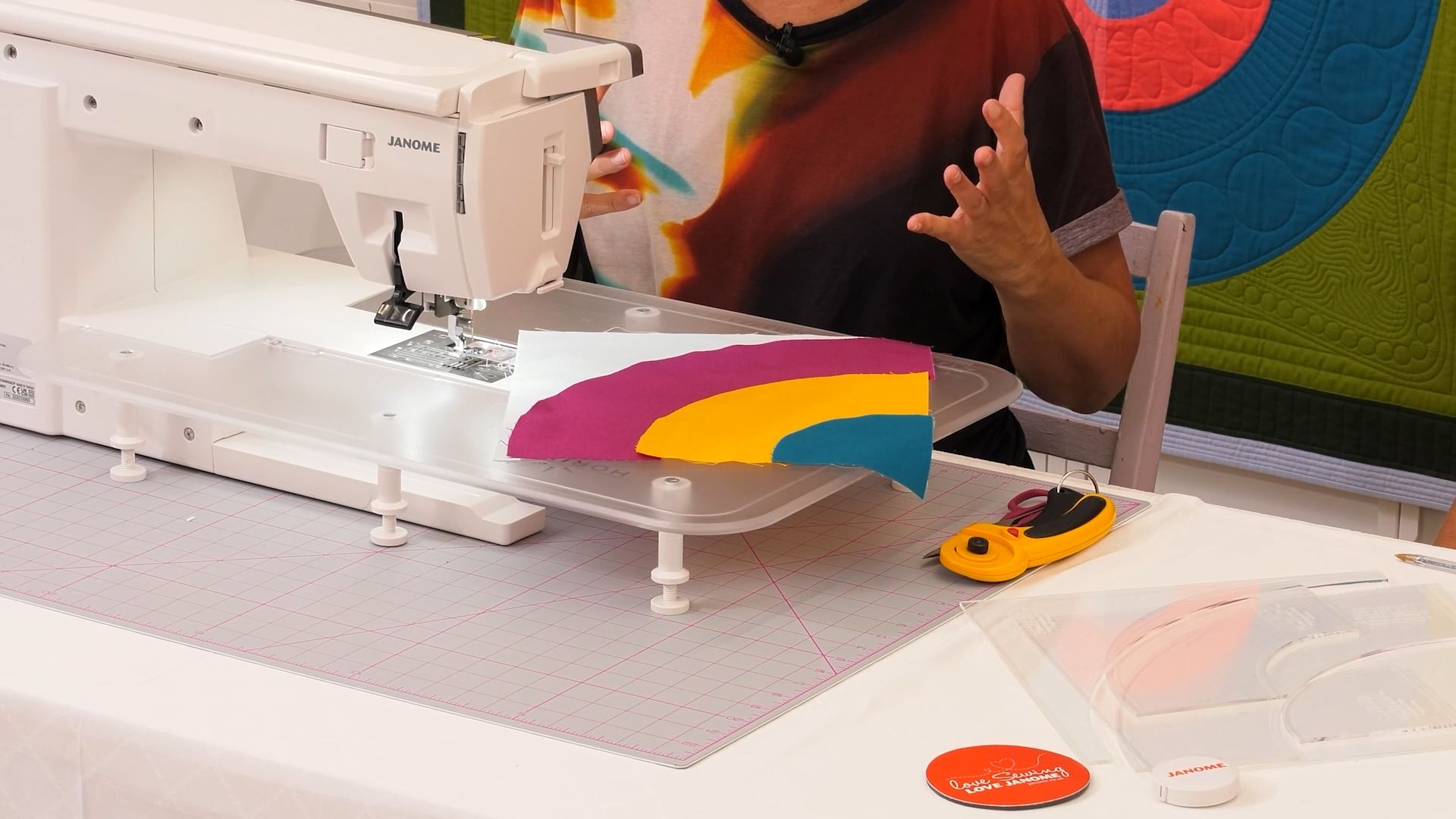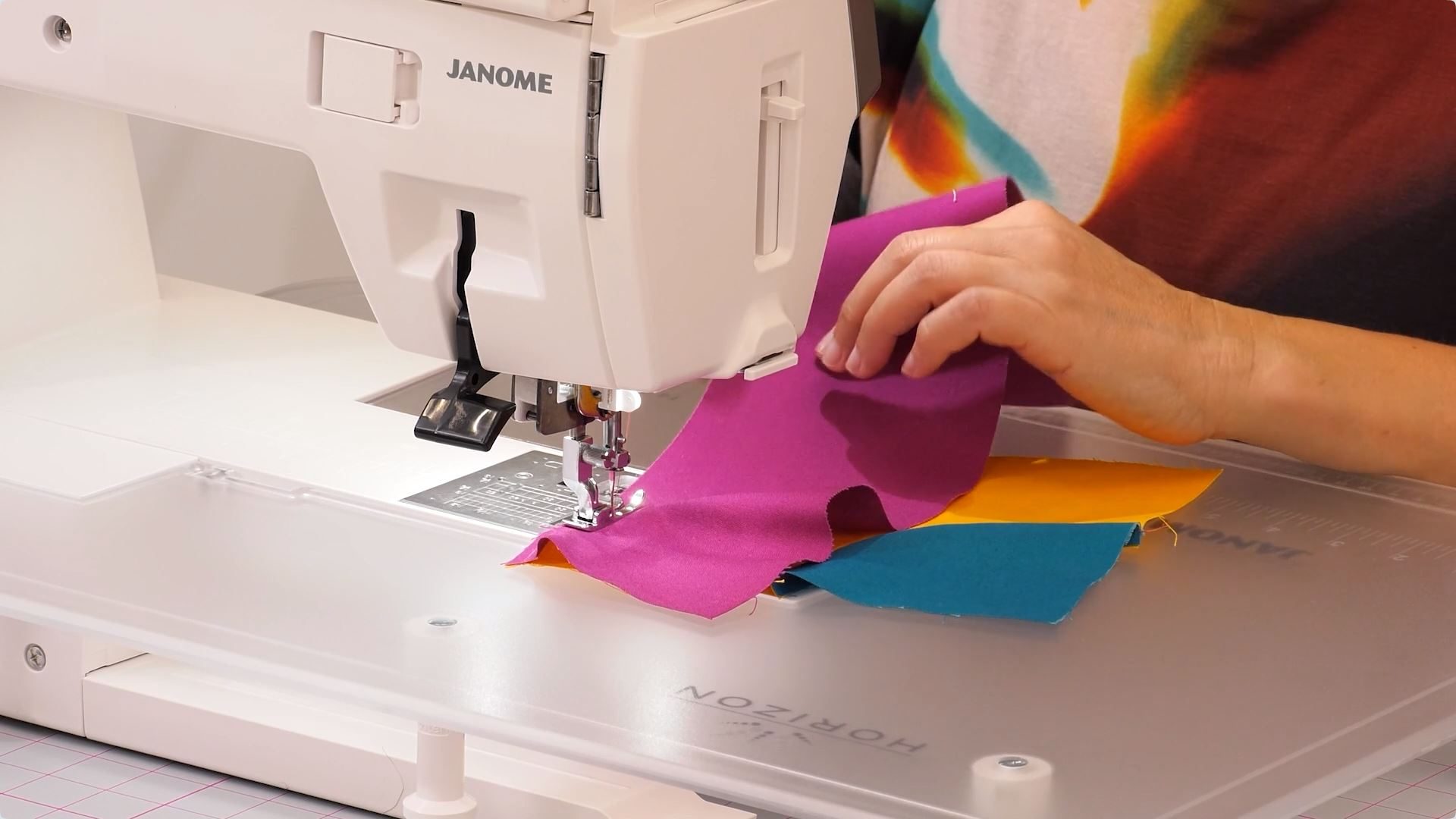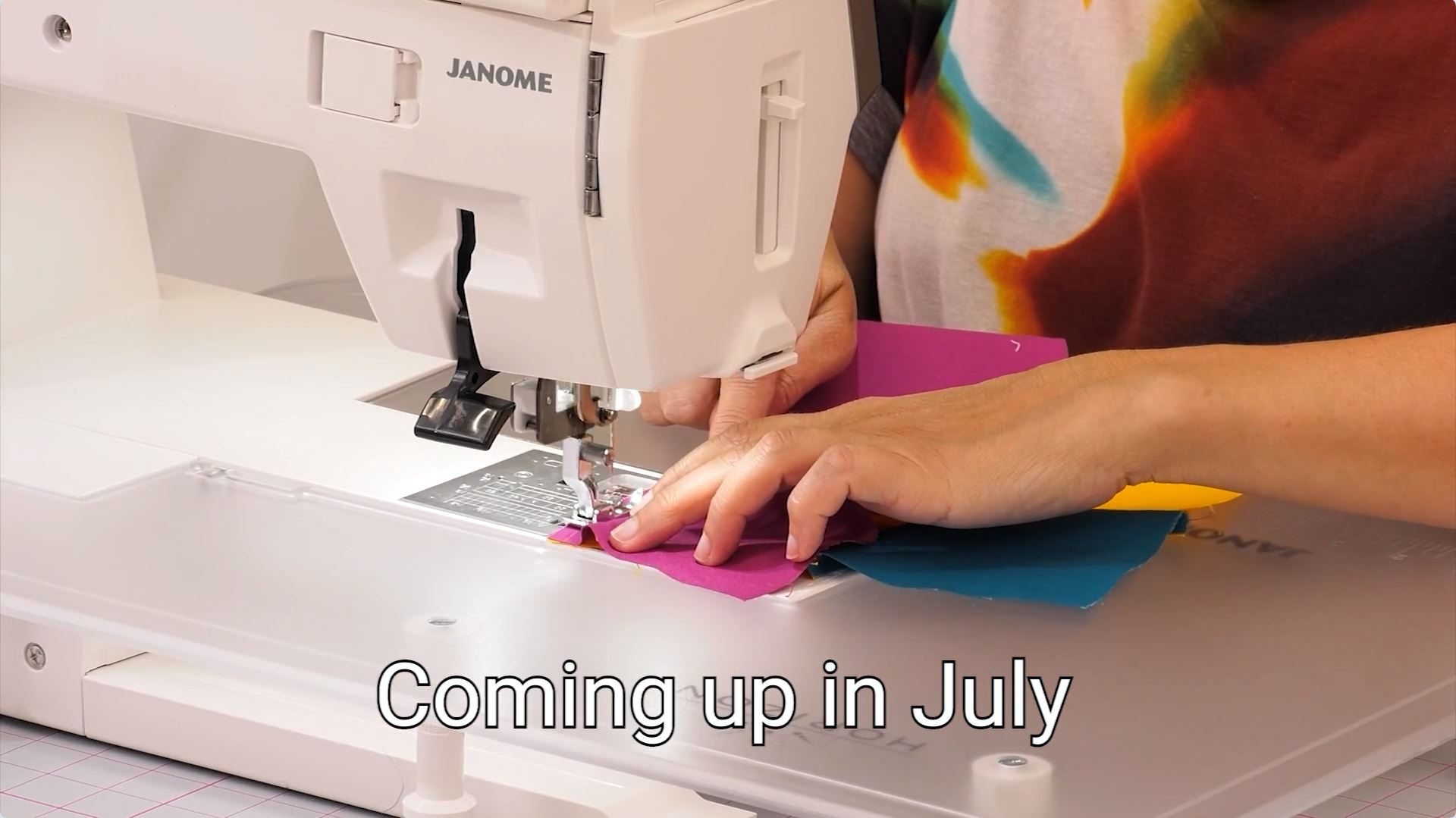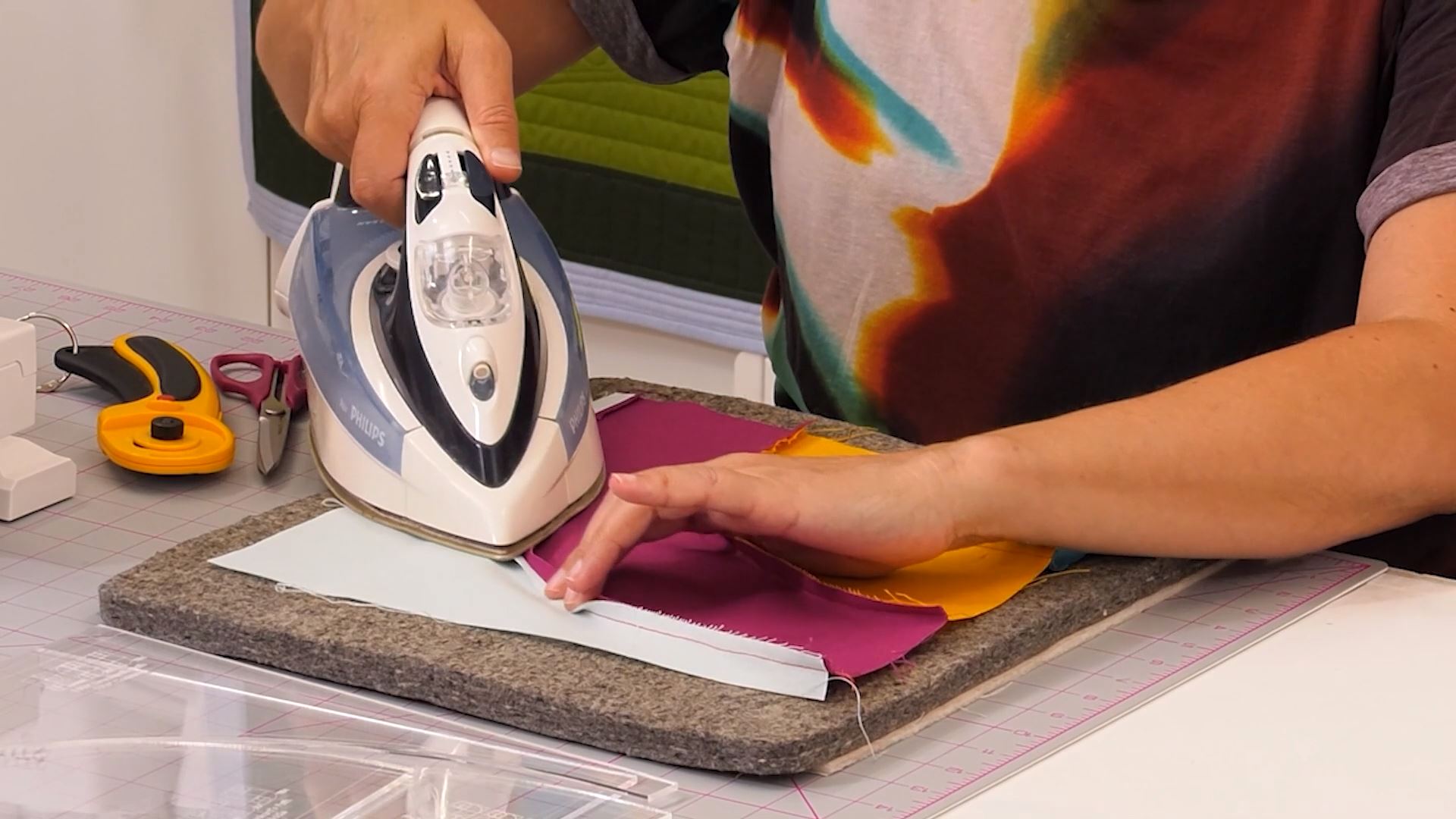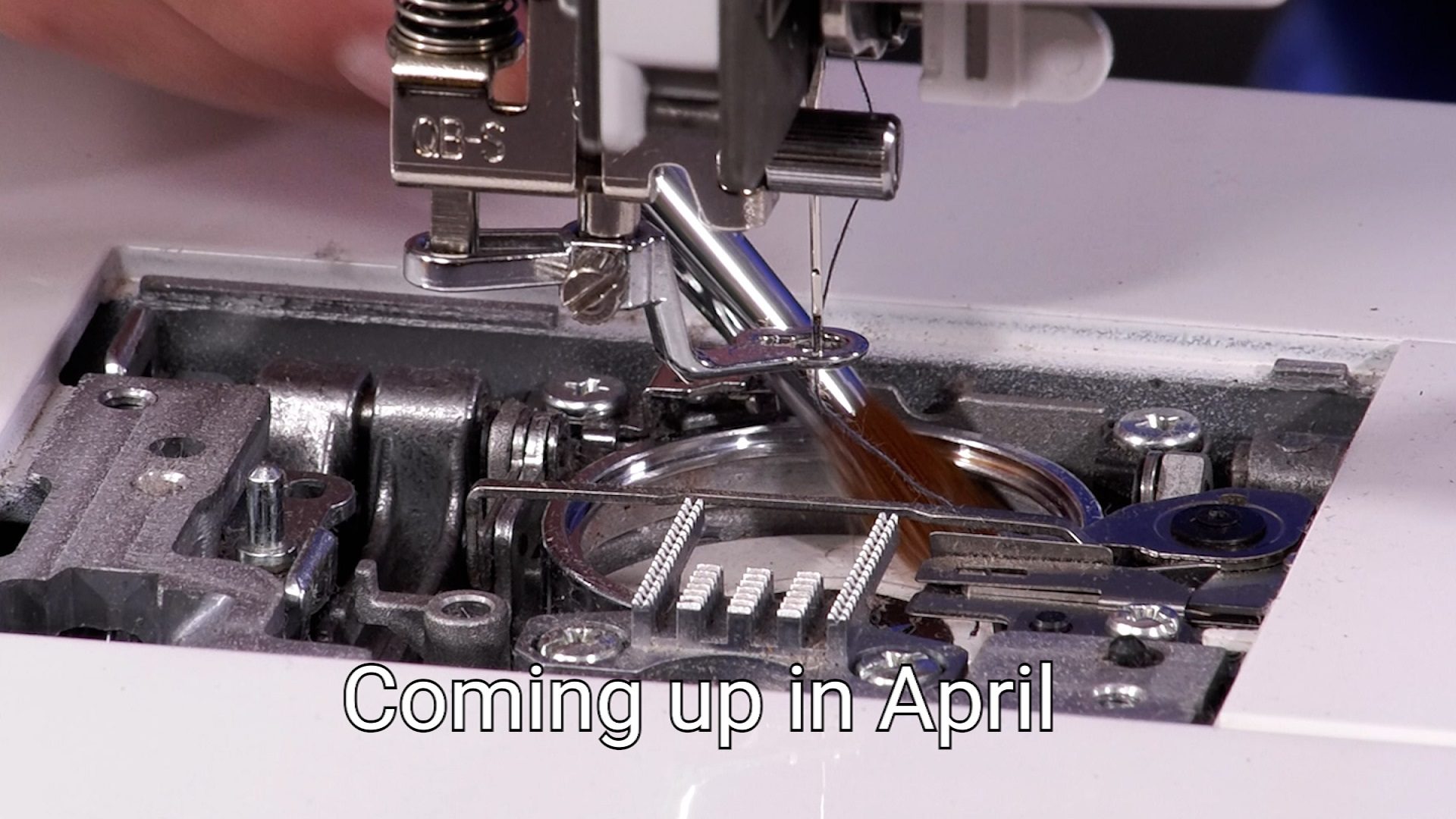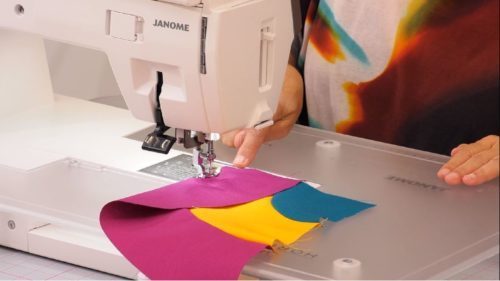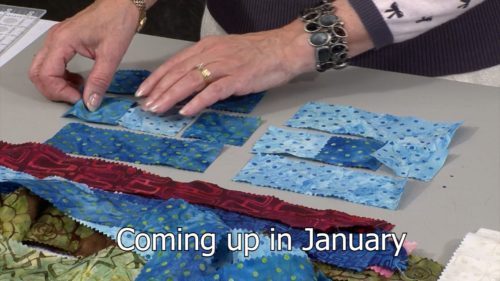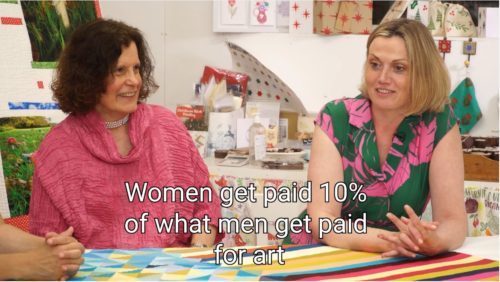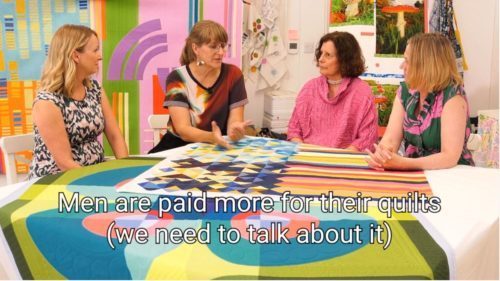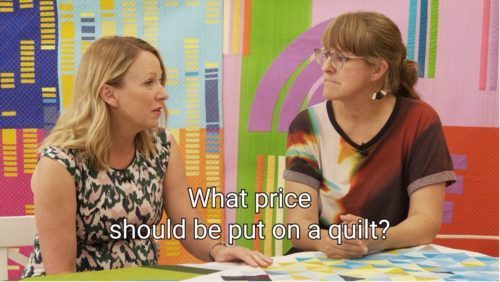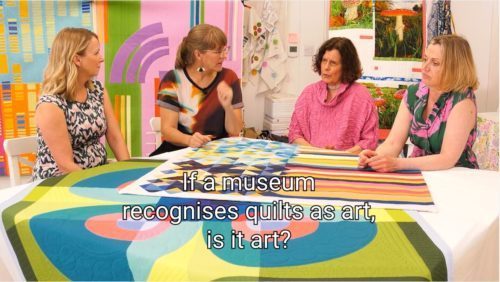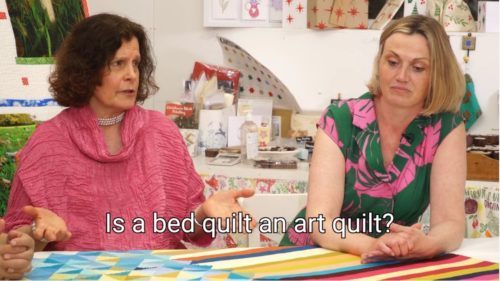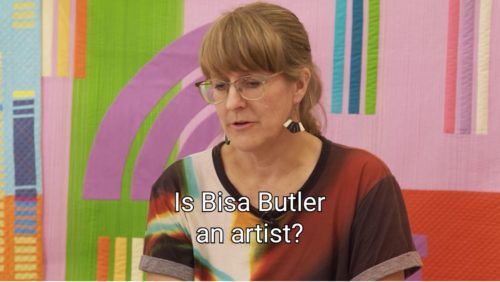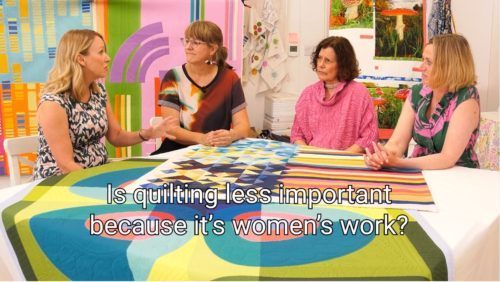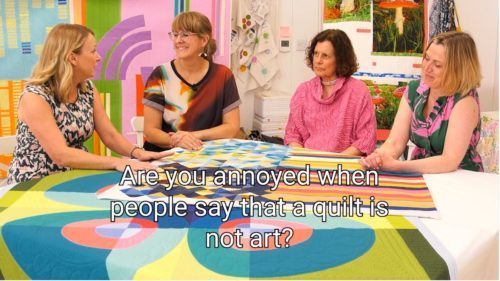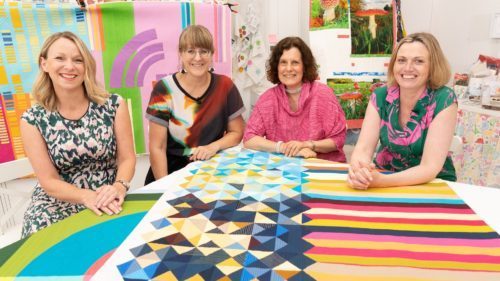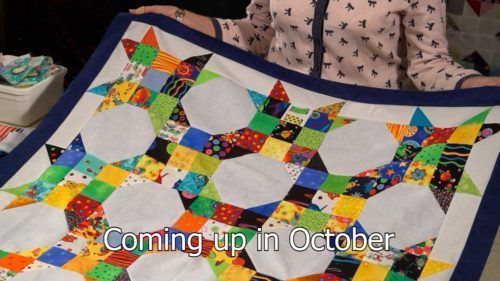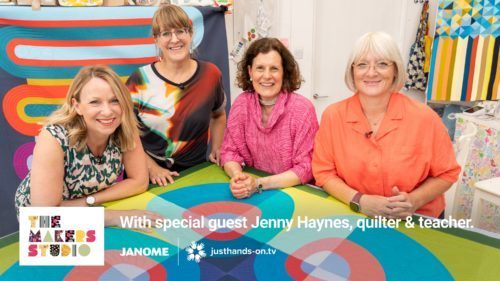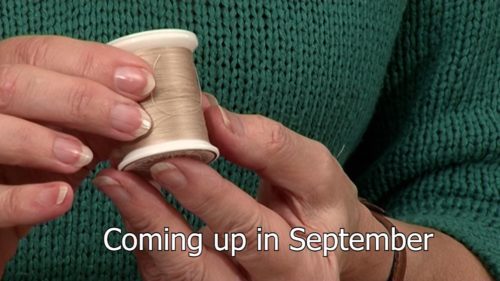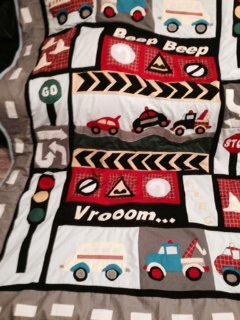About Jenny
Jenny is a modern quilt designer and teacher known for her colourful, curvy machine pieced patterns.
Jenny Haynes (née Nilsson) studied Pattern Cutting and Tailoring in her native Stockholm. Soon after, she followed her passion for fabrics and moved to London to study Fashion and Textiles at the London College of Fashion. She went on to develop her own label ‘Papper, Sax, Sten’ (that’s ‘Paper, Scissors, Stone’ in case you’re wondering!), creating award-winning designs that reflect her many different influences. She is based out of Sheffield, now.
Her bespoke quilts and furnishings are recognised for their clean and simple, mid-century modern design. Jenny mixes rich colours with pastels and is not scared of a colour clash. She often uses her trademark curves together with solid fabrics, while remaining faithful to her Scandi’ roots.
Jenny’s work was recognised in Summer 2015 when Jenny was invited by the Swedish Chamber of Commerce, along with 18 other Swedish designers, to be a part of Heal’s Swedish Summer Exhibition. Heal’s have a long history of promoting Swedish design with exhibitions in 1923, 1951 and 1971.
Her quilts and patterns appear regularly in books and magazines, including Thames & Hudson for the V&A and in Patchwork & Quilting: A Maker’s Guide, ‘Designed by teachers and practitioners at the leading edge of today’s craft revival.
Two of her quilts won awards at QuiltCon 2019 in Nashville. QuiltCon is arranged by the Modern Quilt Guild and is the biggest exhibition of modern quilts in the World.
When Jenny isn’t designing her curvy and quirky quilt patterns, she teaches at the V&A as well as giving talks and running workshops for Guilds and textile venues in the UK and abroad. She also offers live online workshops.
You can watch Jenny demonstrate how to sew no pin curves in this episode of The Makers Studio series.
Signature Technique
Colourful curvy quilt patterns
Top Tips
- Use a shorter stitch length (1.8) for stitching curves to give your block extra strength and to avoid splitting in the seam.
- When colours clash a bit it gives your quilt spark.
- When sewing curves, always start with the smallest curve then work your way up.
- Your finger is the pin when sewing no pin curves.
- Always finish all of your piecing before pressing your block. It’s easy to stretch your block out of shape if you press before you are done.
- Press your seams open for a flat, block print like finish.
- Use a tailor’s block to help you seams stay flat.
- Precise and variable quilting designs help to enhance the organic shapes in your quilt.
Videos
Patterns
Posts
Traffic Pattern quilt
Pat was the lucky winner of the Boys quilt pattern a few months back, donated by Kids & Co.. I have now finished the "traffic" quilt that I won in one of your competitions and have sent you a picture from my iphone - hope it arrives ok. It really came out well and looked stunning. Thank you. It was well received by mother father and child!! I felt very proud of it - thanks to all of your teaching over the years. and she plans to make two more for the other grandchildren! Happy Sewing
(we have Bugsy and Alphabet Jungle from this range available in the shop)
Rotary cutters
I was wondering if you could tell me which rotary cutters Jennie used in the fabric balls video? My cutter needs replacing and I fancy one of the safety ones which become safe when raising the cutter from the fabric. Answer: I think Jennie was using the Trucut range of rotary cutter which has a groove in it and is best used with its own ruler; however Olfa do both sizes 28mm and 45mm cuttter with a self-closing system, and these are readily available from quilt shops (but if in doubt you can contact Isa@creativequilting.co.uk) Want to see the Fabric Balls video? click here:
How do I know if the fabric is cotton?
Do a burn test – I know that sounds dramatic but we aren’t suggesting you set your stash alight!! In essence, cotton fibres ignite as the flame from your match draws near Synthetic fibres curl away from the heat and tend to ‘melt’. Take a few fibres; put into flameproof container with sides maybe, and apply a small flame from a long handled match maybe, and watch what happens.


